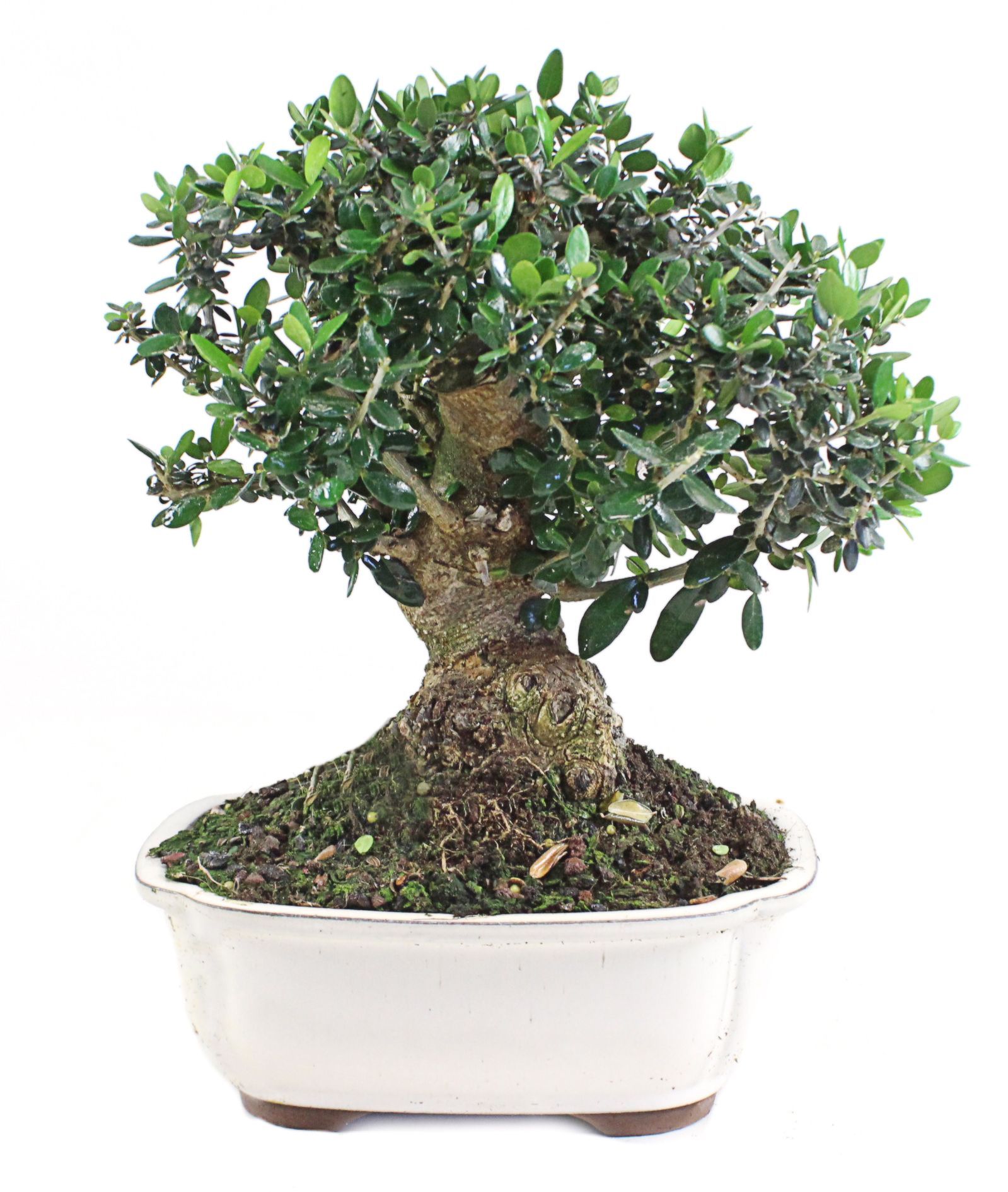Characteristics
It is a wild olive tree with a bushy style. The leaves and fruits are smaller than in cultivated olive trees. The rough look of its bark accentuates its old age appearance, making it a very interesting species to be grown as bonsai.
Location
In a Mediterranean climate area, outdoor, in full sun all year. Outside its natural climatic zone, it is advisable to protect it from extreme cold and especially from frost (below zero temperatures for more than 24 hours.)
Watering
It is important to control irrigation well, and avoid excessive waterlogging.
A low and controlled irrigation, allowing the surface layer of the substrate to dry between watering.
Fertilization
From spring to mid-autumn with organic fertilizer or liquid NUTRIBONSAI from Mistral Bonsai, applied every two weeks through irrigation water.
Re-potting
It must be taken into account that olive trees grow very slowly; Thus, their roots mass also develop little by little. If the fertilizer and the substrate are adequate, the tree will not need to be transplanted until passed 3 to 5 years.
Substrate
Mistral Bonsai TERRABONSAI.
After transplanting it is convenient to water with a solution of VITABONSAI from Mistral Bonsai, to accelerate the recovery of the tree.
Pruning and pinching
Pruning
During the month of March.
Pinching
From April to October, when the shoot reach 7 to 8 pairs of leaves, we will pinch to obtain 2 to 3 pairs of leaves.
Wiring
It can be wired throughout the year, with aluminium wire.
Curiosities
Lately, the wild olive tree appears as one of the species of more interest for the reforesta-tion of Mediterranean forests; due to its great resistance to drought and soil salinity, and to its rusticity in general.

